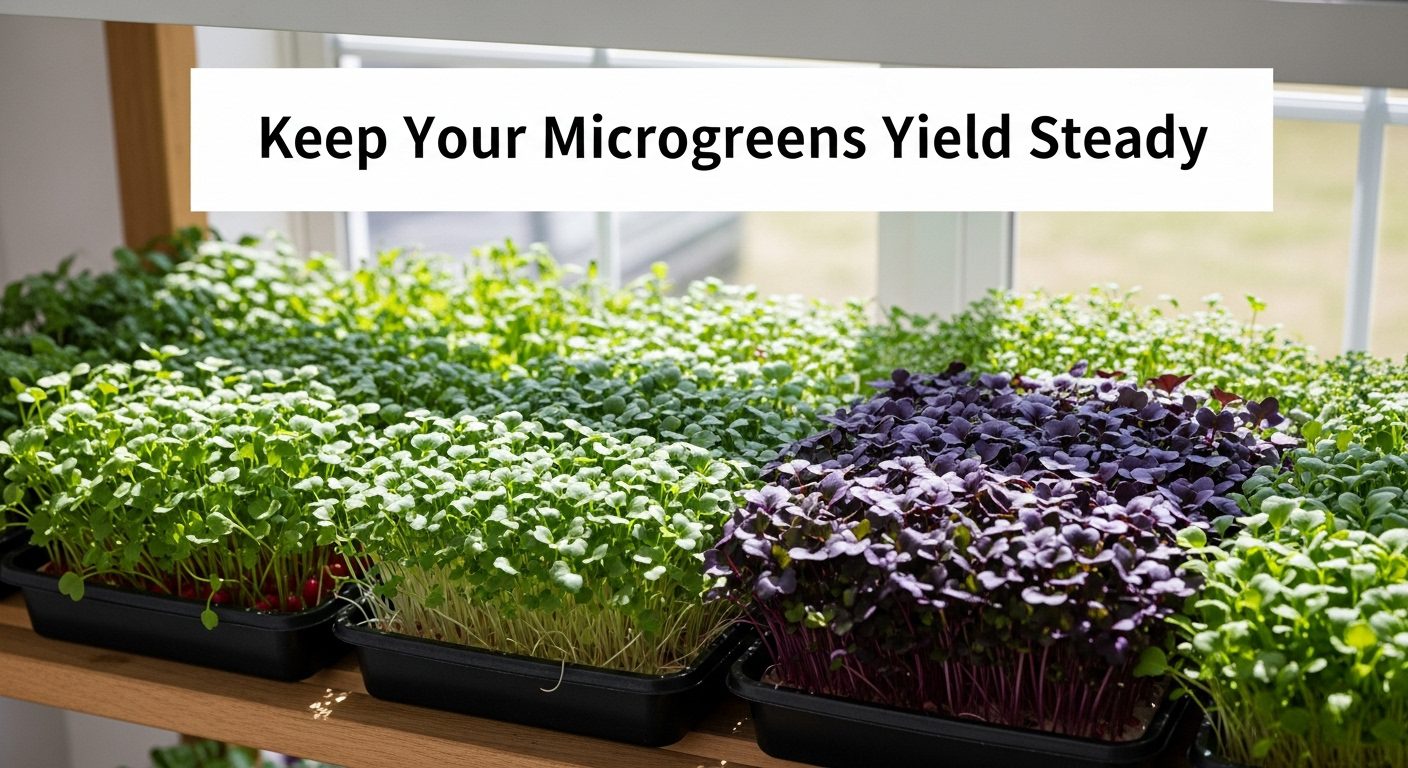
Creating a serene indoor Japanese garden can be very fun. It can transform your space into a special place for relaxation.
You can start by selecting a Zen garden tray to shape your miniature landscape.
You can add natural elements like stones and plants to make it look nice. Miniature bamboo fountains and tranquil moss patches can also be added to create a peaceful ambiance.
This will make your garden a happy and calm place to be in.
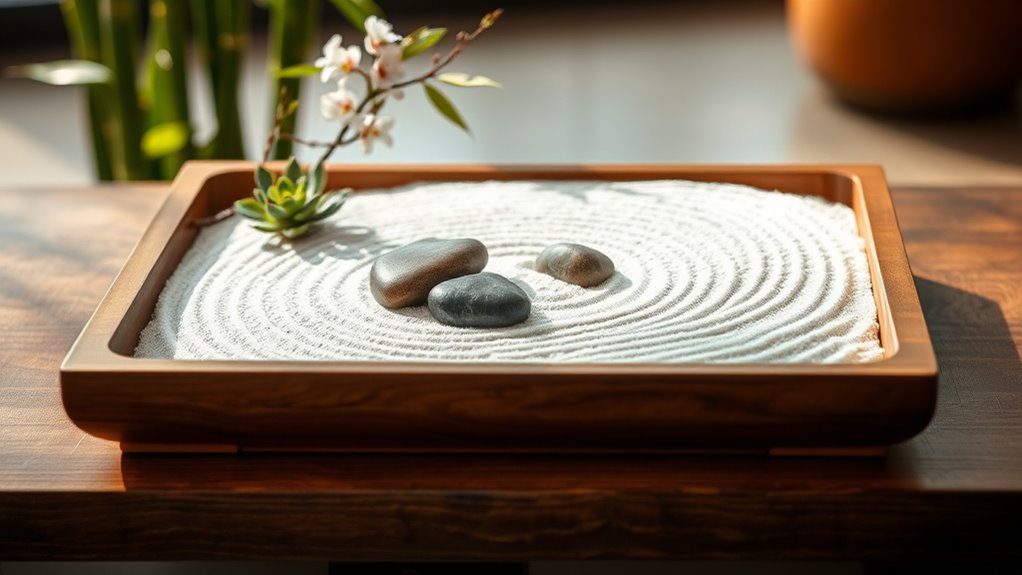
A Zen garden tray is a perfect addition to your indoor Japanese garden, offering a space for reflection and tranquility. Typically shallow and made from natural materials like wood or stone, these trays can be filled with fine sand, pebbles, or gravel to create a miniature landscape. By raking patterns into the sand, you can cultivate a sense of calm and mindfulness. Personalize your tray with decorative rocks, small plants, or figurines to enhance the aesthetic and create a serene retreat within your home.
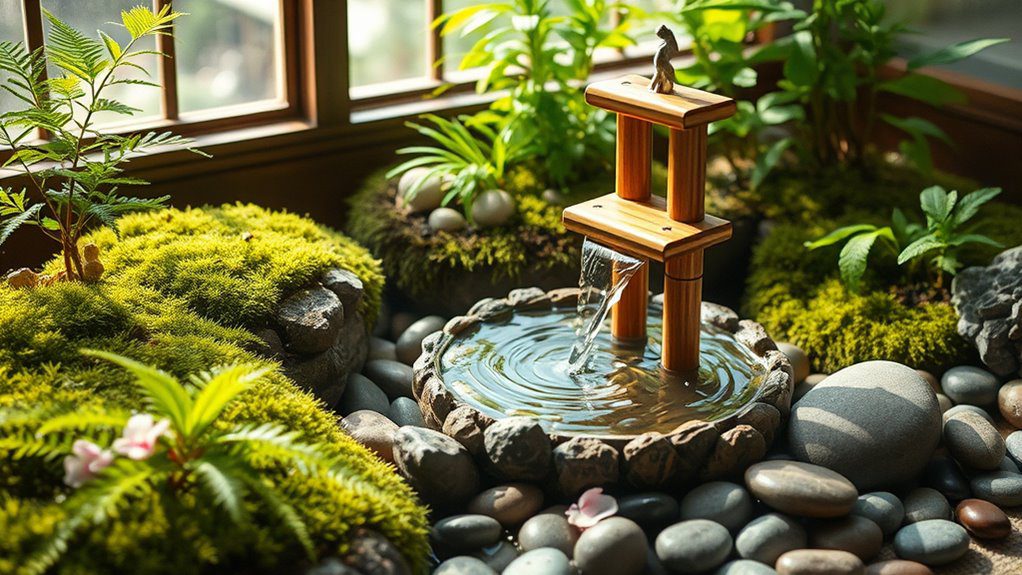
Incorporating miniature bamboo fountains into your indoor Japanese garden adds a serene and tranquil element, enhancing the overall ambiance. These small fountains mimic the soothing sounds of natural water flow, promoting relaxation and mindfulness. Not only do they serve as a striking focal point, but their design also reflects traditional Japanese aesthetics. Place them among lush greenery or pebbles to create a harmonious balance that encourages peace within your indoor oasis.
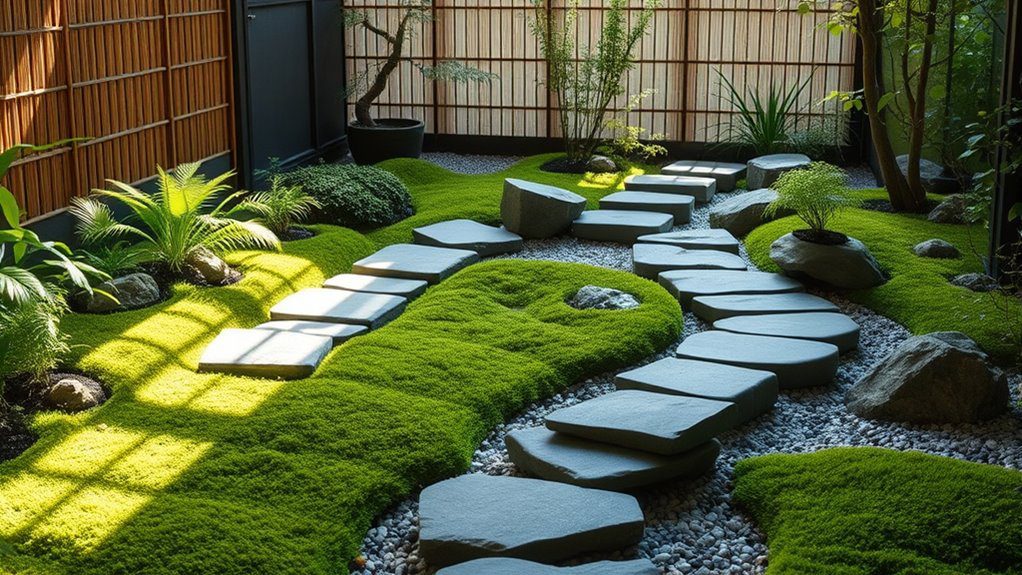
Incorporating natural stones for pathways in your indoor Japanese garden adds an authentic touch and enhances the serene aesthetic. Select smooth river stones or flat stepping stones to create a tranquil walkway that guides visitors through your garden. These pathways not only provide structure but also evoke the harmony found in traditional Japanese landscapes. Surround the stones with moss, gravel, or pebbles for added texture and to mimic the natural beauty of an outdoor setting.
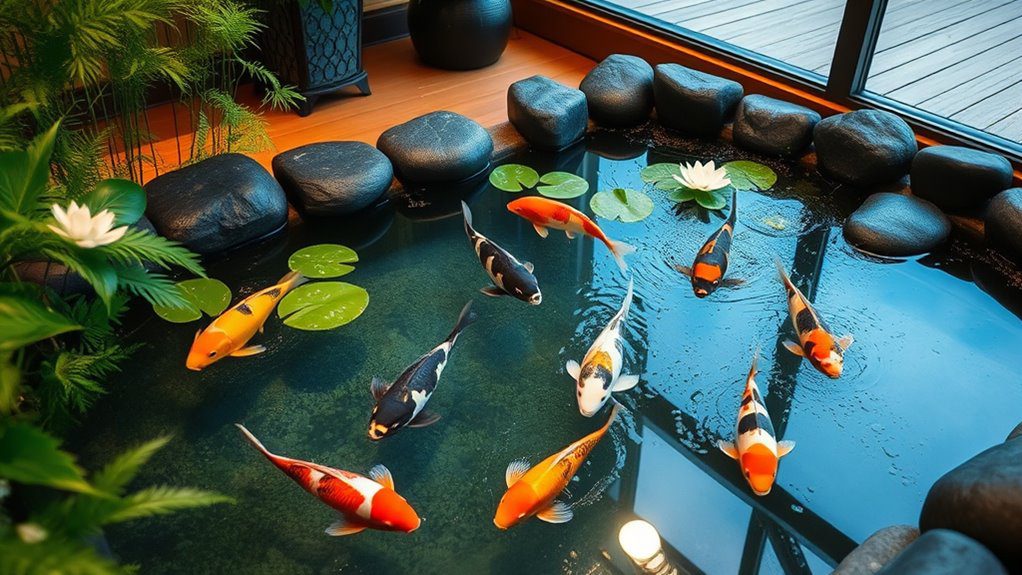
Incorporating a peaceful koi pond into your indoor Japanese garden can create a serene focal point and enhance the overall tranquility of the space. Choose a stylish, compact pond design that fits your available area, and fill it with colorful koi fish that symbolize harmony and luck. Surround the pond with natural stones, water-friendly plants, and ambient lighting to evoke a calming atmosphere. The gentle sounds of water can also promote relaxation, making it a perfect escape from daily stress.
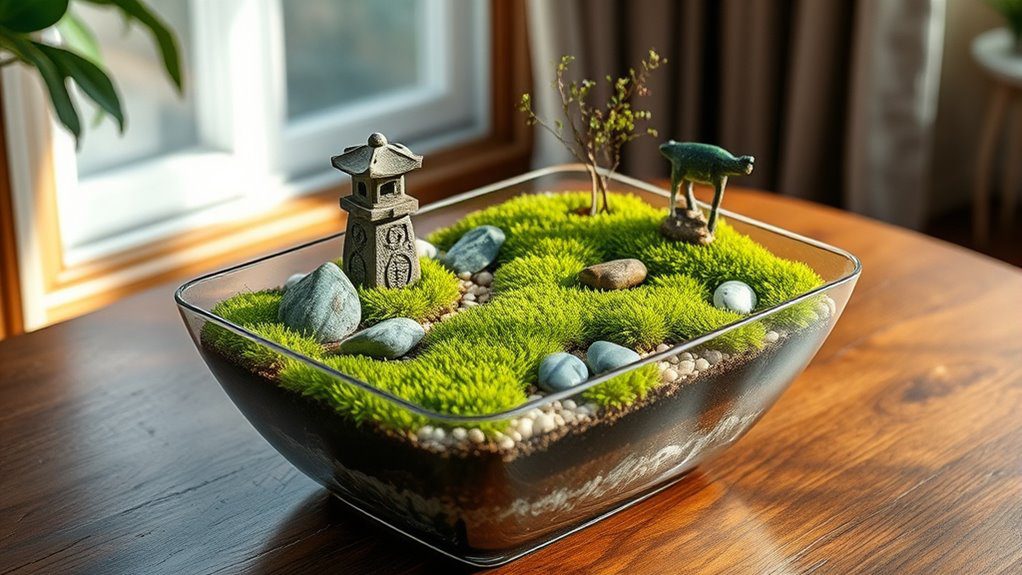
Creating a moss garden indoors brings a touch of tranquility and natural beauty to your space. Start by selecting a shallow container or terrarium and layer it with pebbles for drainage, followed by a mix of potting soil and sand. Choose various moss types to create texture and depth, arranging them creatively. Incorporate decorative stones, small figurines, or even a tiny water feature to enhance the aesthetic. Keep the garden in a humid spot with indirect light for ideal moss growth and maintenance.
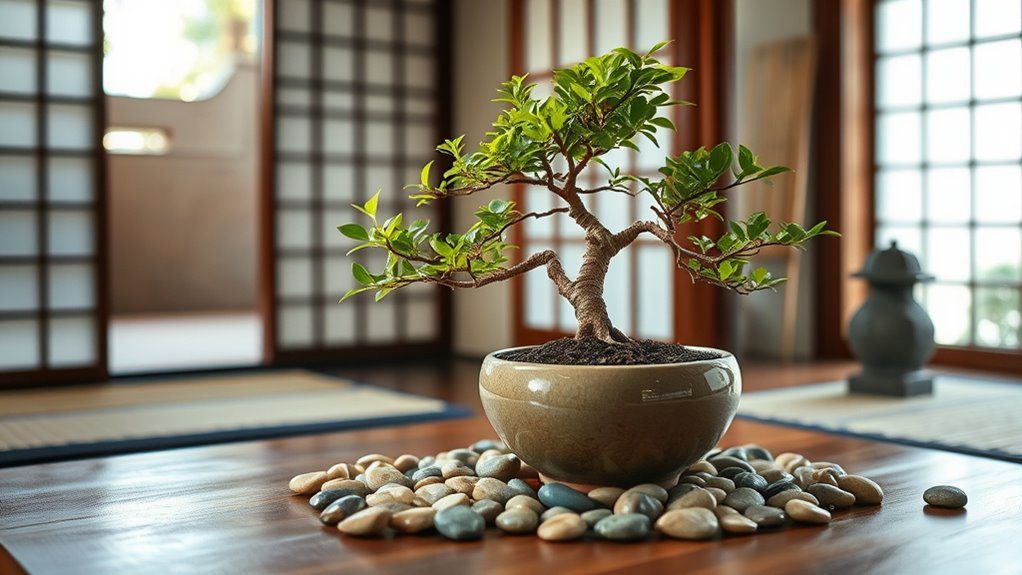
Incorporating indoor bonsai trees into your Japanese garden can create a focal point that exudes tranquility and sophistication. These miniature trees, cultivated with care, embody the essence of nature’s beauty and artistry. Place them in decorative pots that complement your decor, and position them near natural light to encourage healthy growth. Bonsai trees not only enhance aesthetic appeal but also foster a zen-like atmosphere, making them a perfect addition to your indoor oasis.
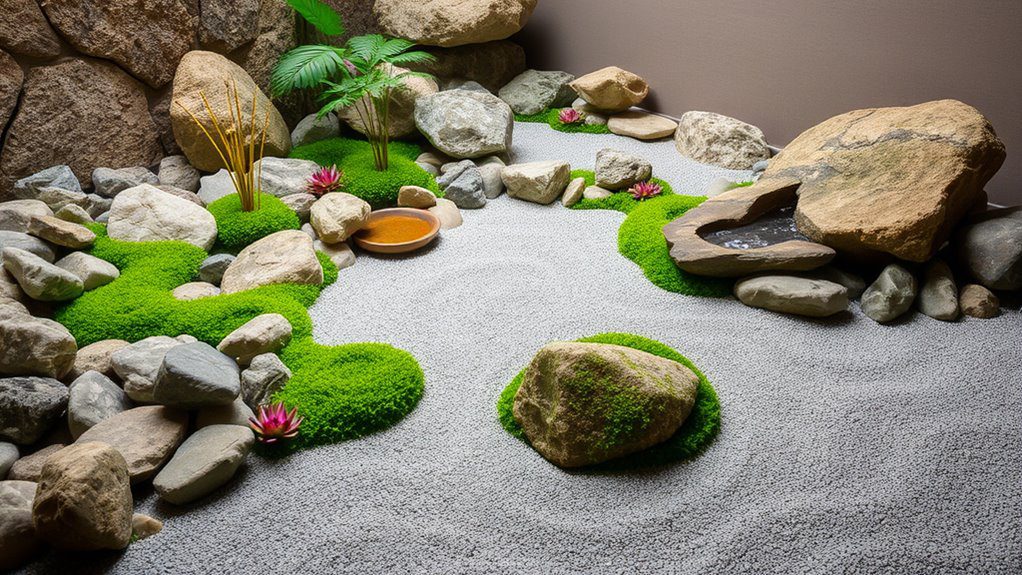
Designing a rock garden in your indoor Japanese garden can create a serene and visually striking focal point. Use various sizes and types of stones, arranged thoughtfully to mimic natural landscapes. Incorporate sand or gravel to symbolize water, allowing for patterns that evoke ripples. Add low-maintenance plants like moss or succulents to soften the rocky textures. A small water feature or bamboo accents can enhance the tranquil atmosphere, making your indoor space a peaceful retreat.
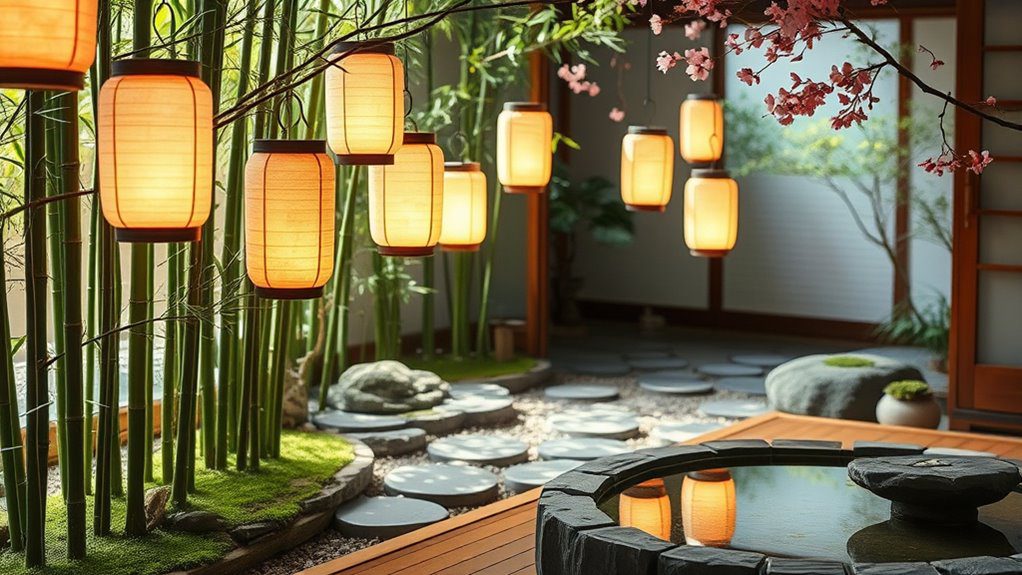
Hanging Japanese lanterns can add a warm and enchanting ambiance to your indoor Japanese garden. These lanterns come in various styles, from classic paper designs to more durable metal or stone options, allowing you to choose one that complements your space. By suspending them at different heights, you can create visual interest and highlight focal points within the garden. When lit, they cast a gentle glow, evoking a serene and tranquil atmosphere reminiscent of traditional Japanese landscapes.
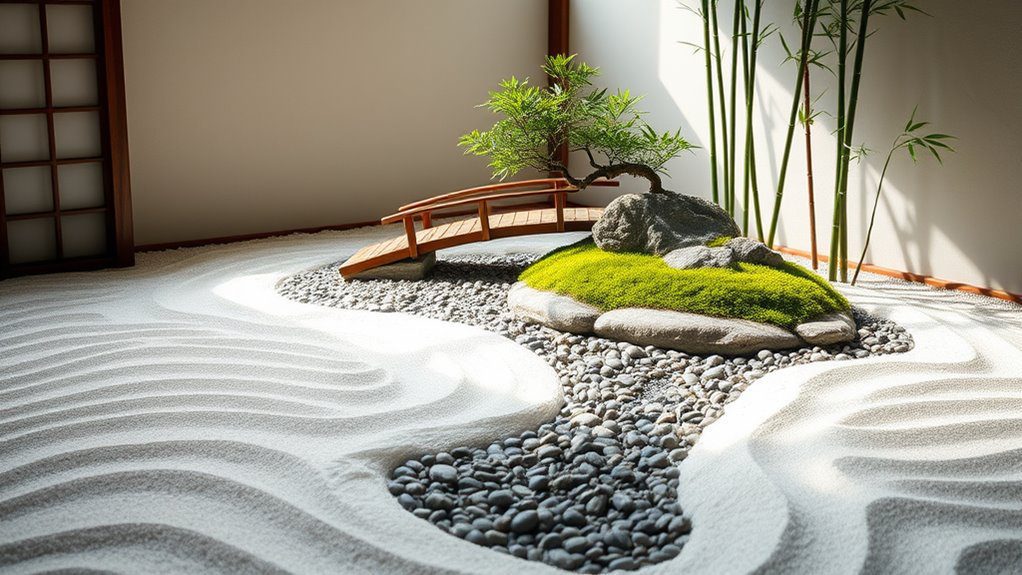
Incorporating sand and gravel into your indoor Japanese garden can provide essential texture and contrast, enhancing the overall aesthetic. These materials mimic natural landscapes, allowing for the creation of raked patterns that symbolize rippling water or waves. Using fine sand alongside larger gravel pebbles can also help define pathways and areas within the garden, while promoting drainage. Such elements contribute to a serene and peaceful atmosphere, capturing the essence of traditional Japanese design.
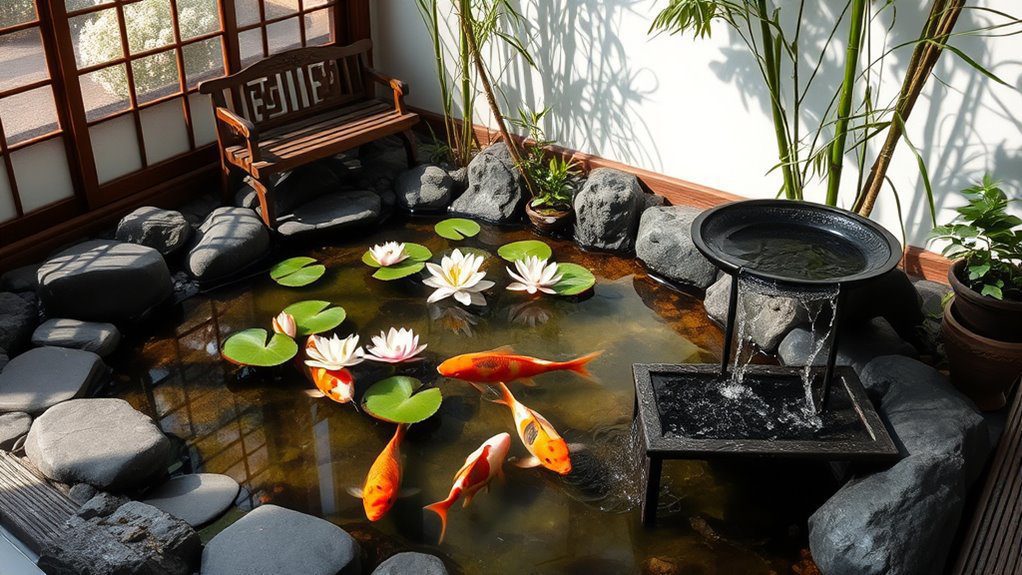
Indoor water features are a enchanting addition to any Japanese garden, enhancing the serene atmosphere. Elements such as small fountains, koi ponds, or tabletop water bowls create soothing sounds and reflections, promoting relaxation. Incorporating lily pads, stones, and aquatic plants can further mimic the natural beauty of outdoor settings. These features not only serve as a focal point but also symbolize tranquility and harmony, essential aspects of traditional Japanese design.
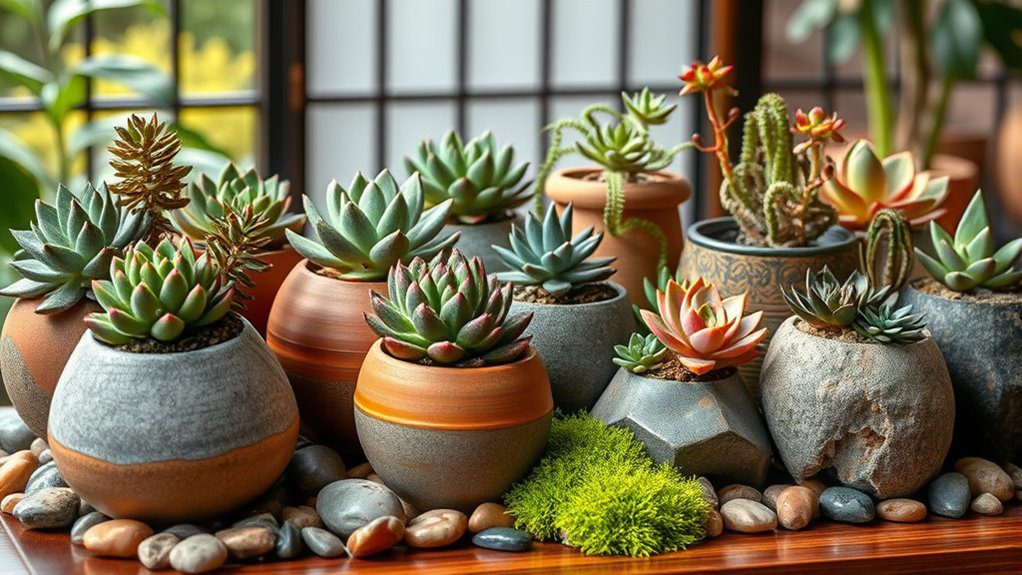
Arranging succulents in unique pots is a creative way to enhance your indoor Japanese garden. Choose pots that reflect traditional Japanese aesthetics, such as ceramic or stone containers with earthy tones. Mix varying sizes and shapes of succulents for visual interest, and consider incorporating elements like pebbles or moss for texture. Position the pots in a way that mimics natural landscapes, allowing each succulent to shine while contributing to a serene and harmonious atmosphere.
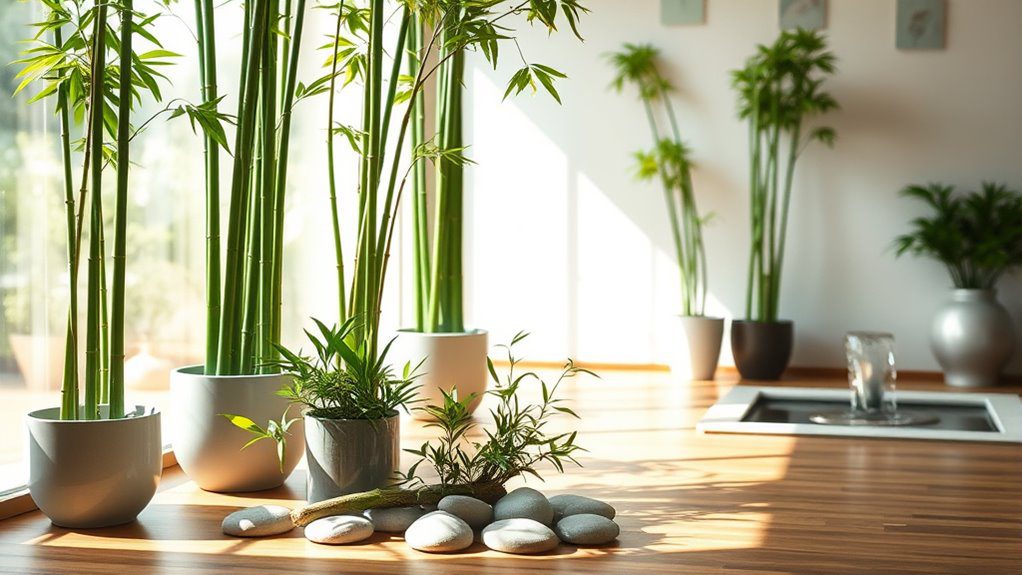
Incorporating indoor bamboo plants into your Japanese garden design adds a touch of tranquility and elegance. Known for their air-purifying qualities and resilience, bamboo creates a serene atmosphere that enhances your space. Position tall bamboo stalks in decorative pots or arrange smaller varieties in clusters for visual interest. Pair them with smooth stones and soft lighting to evoke the calming essence of a traditional Japanese landscape, making your indoor retreat a peaceful sanctuary.
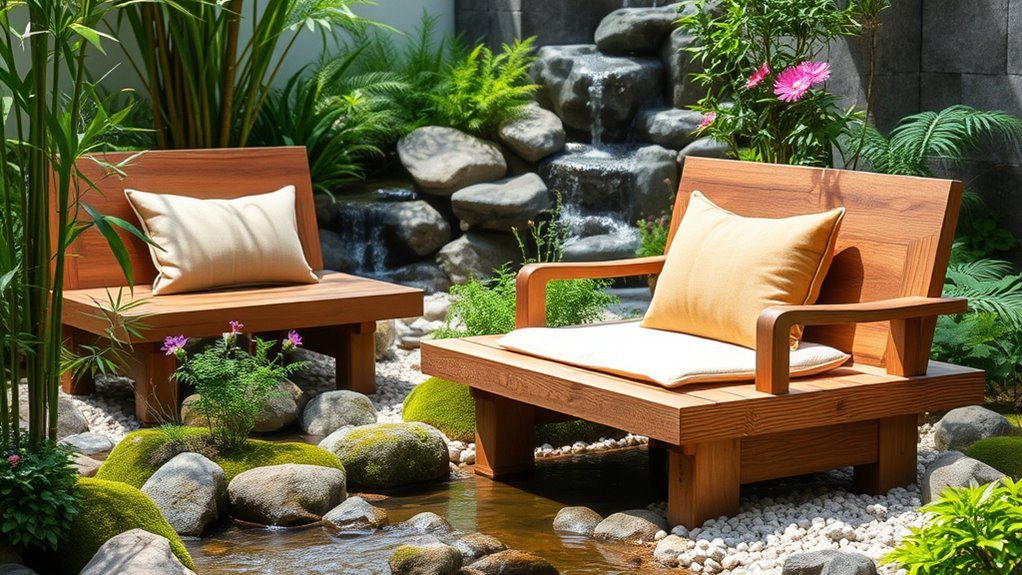
To create a meditative space within your indoor Japanese garden, consider incorporating Zen benches made from natural materials like wood or stone. These benches serve as tranquil spots for reflection and mindfulness, allowing you to connect with nature amidst the serenity of your garden. Position them near a small water feature or surrounded by lush greenery to enhance the calming atmosphere. Add cushions for comfort, inviting you to pause, meditate, or simply enjoy the beauty of your indoor oasis.
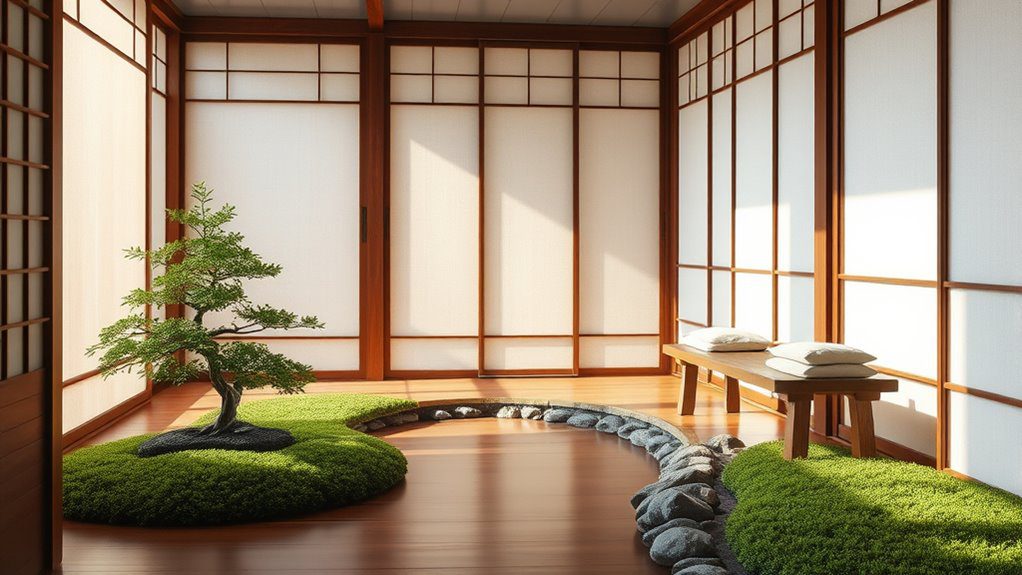
Installing shoji screens is a fantastic way to create privacy in your indoor Japanese garden while maintaining the serene aesthetic typical of Japanese design. These traditional sliding doors, crafted from wood and rice paper, allow soft light to filter through, creating a tranquil ambiance. Positioned strategically, shoji screens can separate different sections of your garden, offering secluded areas for meditation or relaxation while enhancing the overall beauty and harmony of the space.
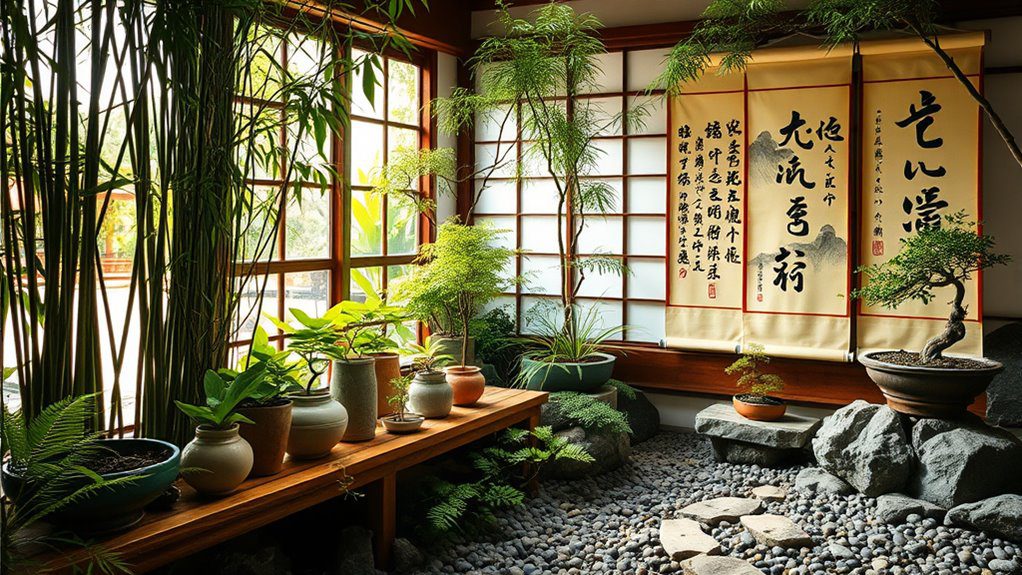
Incorporating calligraphy artwork into your indoor Japanese garden can enhance its tranquil atmosphere and aesthetic appeal. Choose pieces that feature traditional Japanese characters or poetry, as they evoke a sense of serenity and mindfulness. Hang them on walls or display them on shelves alongside plants to create a harmonious balance between nature and art. The flowing lines and elegant strokes of calligraphy will complement the natural elements of your garden, adding cultural depth and visual interest.
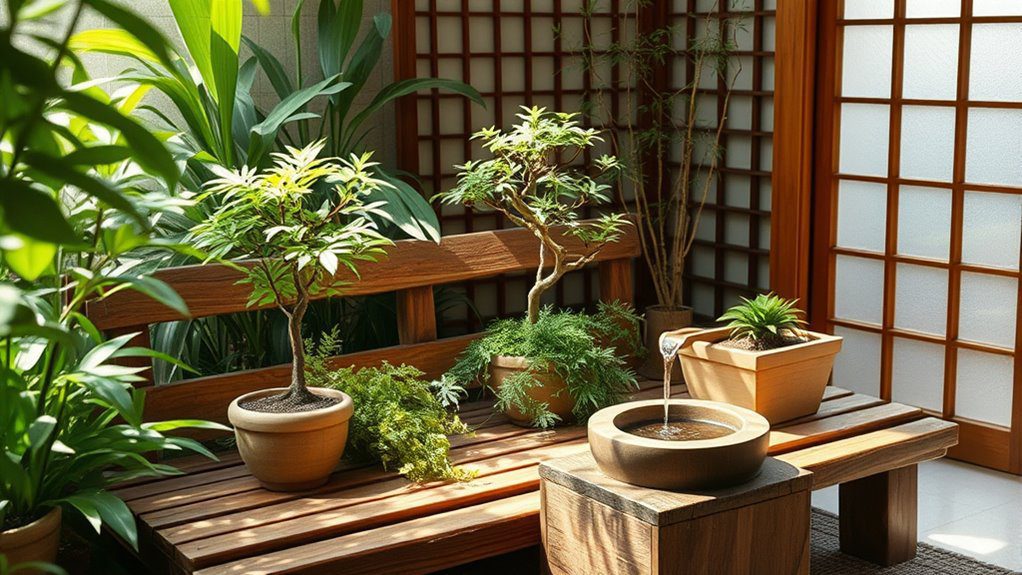
Incorporating natural wood elements into your indoor Japanese garden not only enhances its aesthetic appeal but also creates a serene and calming atmosphere. Consider using wooden benches, planters, or even driftwood sculptures to add texture and warmth. Bamboo accessories, such as fencing or water features, can further evoke a traditional Japanese landscape. The natural grains and hues of wood harmonize beautifully with lush greenery, fostering a peaceful retreat within your home.
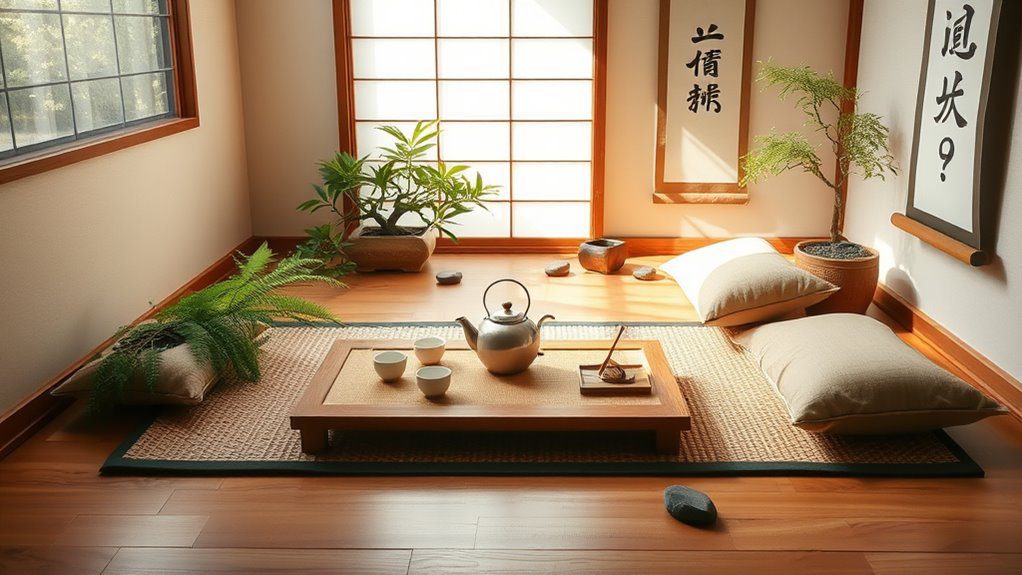
Incorporating a tea ceremony corner into your indoor Japanese garden brings a serene and cultural focal point to your space. Choose a quiet nook adorned with traditional tatami mats and low wooden seating. Surround this area with lush greenery and carefully placed stones to enhance the tranquil atmosphere. Add essential tea ceremony elements, such as a tea set and decorative scrolls, to create an inviting spot for mindfulness and gathering, celebrating the beauty of Japanese tradition.
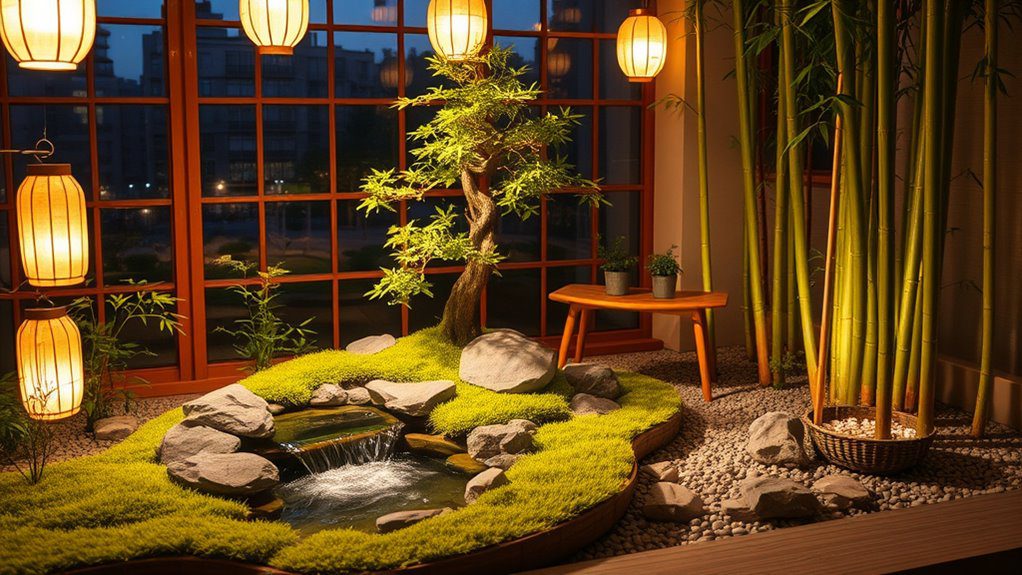
Creating a serene ambiance in your indoor Japanese garden can be beautifully achieved with soft lighting. Consider using lanterns, string lights, or subtle LED fixtures to cast a warm glow, reminiscent of traditional Japanese settings. Position lights strategically to highlight key elements such as water features, bonsai trees, and stones. The gentle illumination not only enhances the visual appeal of your garden but also encourages relaxation, creating a tranquil retreat within your home.
Even if you think you lack the space or time to create an indoor Japanese garden, remember that tranquility can thrive in the smallest corners. A simple Zen garden tray or a tiny moss arrangement can transform your environment into a peaceful retreat. Embrace the journey of crafting your serene space, allowing each element to inspire mindfulness and reflection. Ultimately, it’s not about the size of the garden but the intention behind your design that cultivates true serenity.
